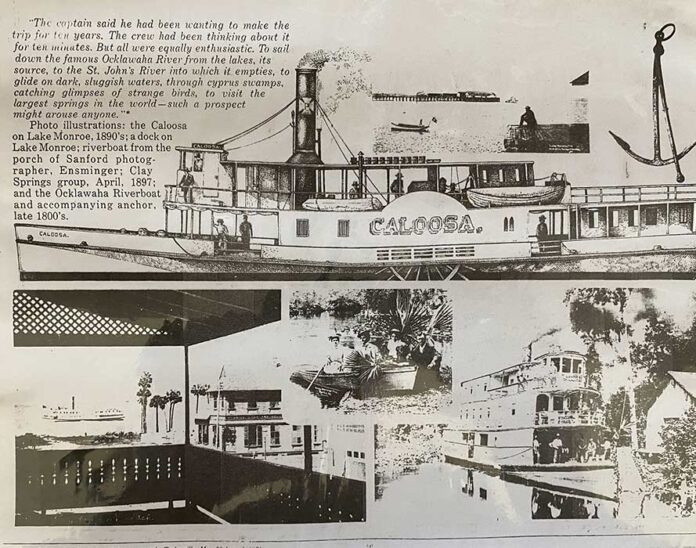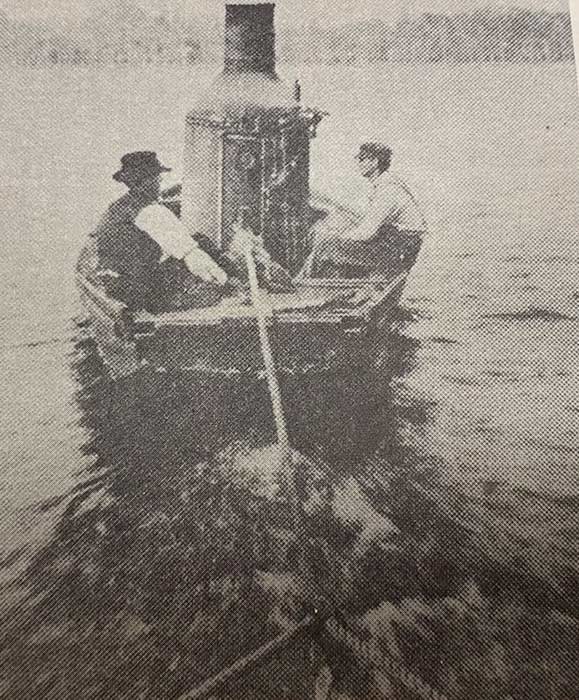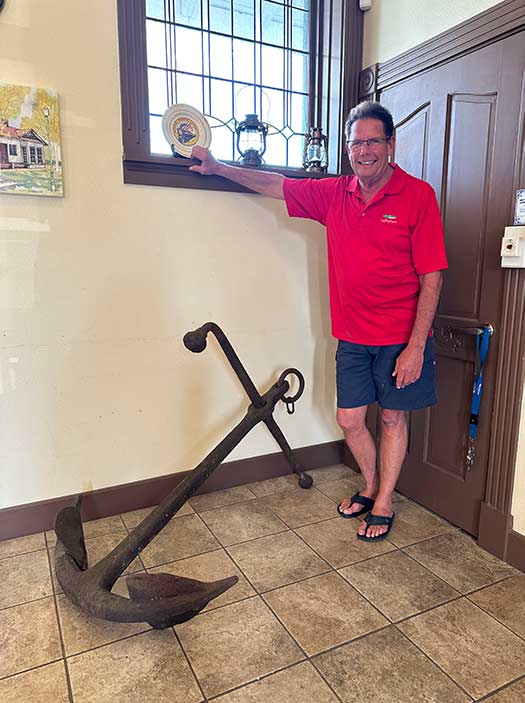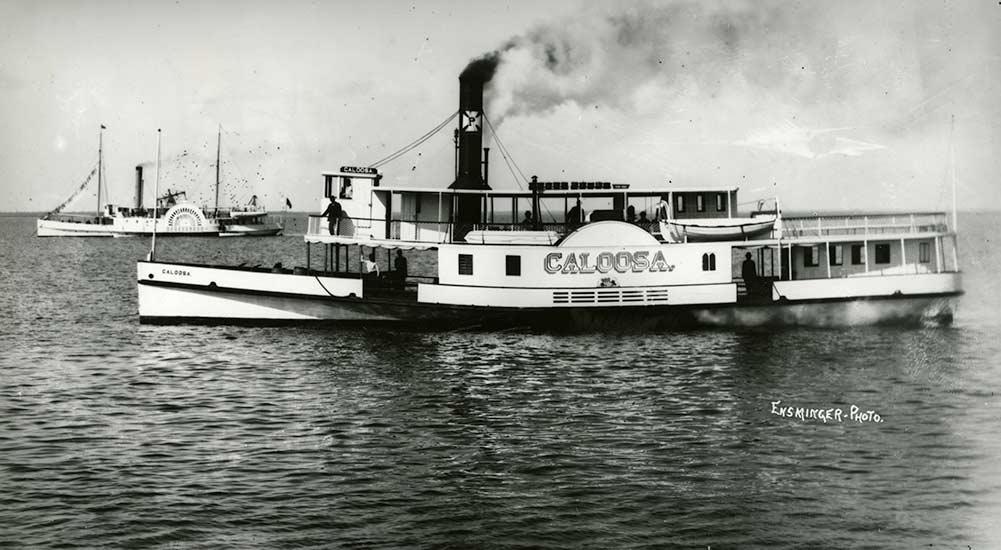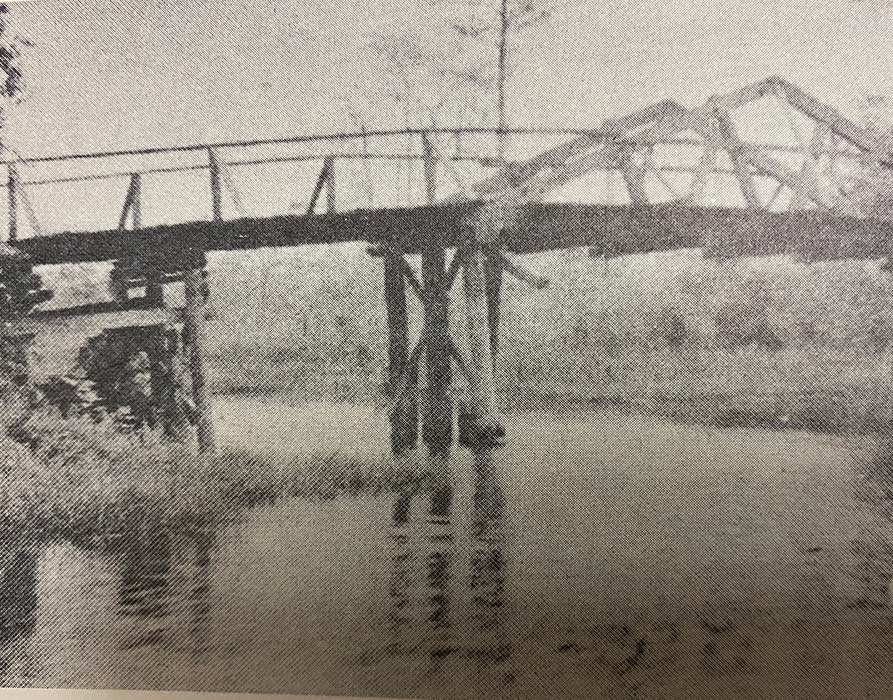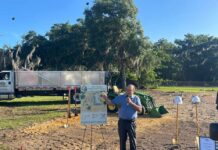By Chuck Seaver, South Lake Tablet
The Clermont chain of lakes has an intriguing and mysterious history that includes documented artifacts found over time that date back to the days when Native Americans ruled the land and made the waterways not only a place called home but a way of life for food sources, travel and a means of survival long before European settlers laid claim to the land.
Over time, the method of water travel evolved from Native American canoes made from dug-out logs to modern-style boats of the era, crude rafts, and small ships of the time. Travel by waterways was a popular way of transporting goods and people in the late 1800s when much of Lake County was still comprised of dense woods, underbrush, wetland marshes, and soft sand. In 1885, Hebert Bailey brought the first steamboat “Cocoa” from Lake Harris to Lake Minneola. The 17-mile trek south through the Palatlakaha River took three weeks to make as Bailey’s crew had to cut through thick growth and logs in the river to make way for the 28-foot boat.
With a lot of hard work at clearing the waterways, eventually, a clear path of navigation was realized from Lake Louisa north to the present-day Clermont chain of lakes. Lake Louisa is fed from the Green Swamp by Big and Little Creeks. The waters of the Palatlakaha flow north 17 miles before reaching the Lake Harris chain of lakes, then into the Oklawahah River before reaching the St. John’s River. By the early 1900’s, the chain of lakes enjoyed higher than normal water levels, hence, allowing for larger-than-usual watercraft to navigate the chain of lakes and rivers.
During the years of drought and lower water levels, the chain of lakes and the contributing rivers have revealed many mysteries, from a downed WWII plane in Lake Louisa found in 1998 to indigenous canoes along the banks of the rivers that had subsided. One such find in 1998 was recently brought to the Clermont Historical Society’s (CHS) Museum Village on West Avenue in Clermont on Saturday, February 8th. A large, 4-foot x 4-foot metal ship anchor that weighs several hundred pounds was rendered as a loan to the CHS by Clermont native, Donald Pitts.
Donald states that his sister Susie and her husband Jeff were walking in a portion of dried waterway on the Clermont chain when the couple discovered a portion of the anchor protruding from the sandy bottom. After digging the remaining anchor out of the sand bed, the couple soon realized that they had discovered a unique relic from yesteryear. “The anchor was in very good condition although it had possibly been submerged under water for decades,” says Pitts. Not sure what to do with the artifact, the family began researching historic boats and the anchor history of the central Florida area.
Long-time Clermont resident and former Cooper Memorial Librarian, Bonnie Ray, who passed away in 2021, located information in 1999 regarding the steamboat Caloosa. The Caloosa’s home dock was on Lake Monroe and operated along the St. Johns River during the late 19th and 20th centuries. Steamboats first appeared on the St. Johns in the 1860’s. In the information that Bonnie located was a short quote from an unknown source. “The captain said he had been wanting to make the trip for ten years. The crew had been thinking about it for ten minutes. But all were equally enthusiastic to sail down the famous Oklawaha River from the lakes, its source, to the St. Johns River into which it empties, to glide on dark sluggish waters, through cypress swamps, catching glimpses of strange birds, to visit the largest springs in the world-such a prospect might arouse anyone,” author unknown.
Bonnie also supplied from her research a printed photograph of the steamboat, including the boat’s anchor. The anchor in the photo is arguably like the anchor that Susie and Jeff discovered buried in the sand of once deep waters of the chain.
Could the quote indicate interest in navigating the Oklawaha south to the Clermont chain? Could the anchor have been from a similar boat the size of the Caloosa? Or perhaps the Caloosa itself? We likely will never know but one thing is for certain about the mysterious anchor. Her simple presence proves once again that our community holds a rich history that has been preserved in many ways and passed down to generations throughout the years. Much of that history is on display at the Clermont Historic Village, 490 West Avenue, Clermont.
Clermont Historical Society spokesperson Dieter Grube states that a permanent resting and display space for the anchor will be put into place soon on the village grounds for visitors to enjoy.
(Photographs courtesy of the Pitts family and the Clermont Historic Society)
Please visit www.ClermontHistoricVillage.org for hours of operation and virtual tours of the village.


